Wood veneers in the simplest of terms are thin slices of natural wood generally less than 1/40” thick. These veneers are typically pressed onto or laminated to thicker core materials such as plywood, particleboard, and MDF to create structural panels to be used in place of thicker hardwood lumber.
This is still real wood but machinery and technology allow the material to be sliced thin without waste instead of sawing it into thick boards. Just like thick boards, it can be plain sawn, quarter sawn, rift-cut, or rotary cut and produce the many different grain patterns associated with each cut.
-
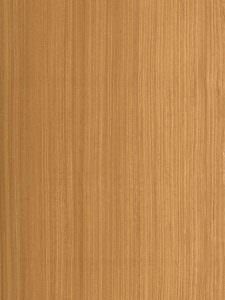 Often called African teak, afrormosia grows in relatively dry forests in the Congo basin of west Africa. Typically available in larger leaves than teak, it has a beautiful golden brown color; a fine, uniform texture; natural luster; and a typically straight grain that may produce a broken stripe when quarter cut. This veneer can be stained to a variety of colors and is a popular choice for architectural and boat interiors. Learn About Veneer Cut & Matching
Often called African teak, afrormosia grows in relatively dry forests in the Congo basin of west Africa. Typically available in larger leaves than teak, it has a beautiful golden brown color; a fine, uniform texture; natural luster; and a typically straight grain that may produce a broken stripe when quarter cut. This veneer can be stained to a variety of colors and is a popular choice for architectural and boat interiors. Learn About Veneer Cut & Matching -
 Akacio veneer is a little-known treasure from Central and South America. It has a lovely honey color, tan to brown lines, straight grain, and a medium texture. Against a fairly uniform background, this species can produce a range of beautiful figures, including curly and fiddleback figures reminiscent of anegre or maple, and is an excellent, adaptable choice for a wide range of interior styles. Learn About Veneer Cut & Matching
Akacio veneer is a little-known treasure from Central and South America. It has a lovely honey color, tan to brown lines, straight grain, and a medium texture. Against a fairly uniform background, this species can produce a range of beautiful figures, including curly and fiddleback figures reminiscent of anegre or maple, and is an excellent, adaptable choice for a wide range of interior styles. Learn About Veneer Cut & Matching -
 Alder is a warm honey-red colored wood with a beautiful, subtle grain interspersed with fine lines and flecks produced by the tree’s annual growth rings. Domestic alder grows in a mile wide coastal strip along the Pacific coast from Canada almost to Mexico; European alder along. The wood darkens to a warm reddish-brown color after being felled. Natural markings including pithy flecks and streaks add to the singular character of this wood. Learn About Veneer Cut & Matching
Alder is a warm honey-red colored wood with a beautiful, subtle grain interspersed with fine lines and flecks produced by the tree’s annual growth rings. Domestic alder grows in a mile wide coastal strip along the Pacific coast from Canada almost to Mexico; European alder along. The wood darkens to a warm reddish-brown color after being felled. Natural markings including pithy flecks and streaks add to the singular character of this wood. Learn About Veneer Cut & Matching -
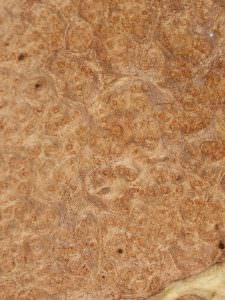 Amboyna burl is among the world’s rarest and most expensive veneers—holding the distinction of being the original wood used on Rolls Royce dashboards. Leaves are small in dimension due to the small size of the burl. Deep yellow-orange to red, amboina burl has an unsurpassed depth and beauty prized in high-quality architectural woodwork and cabinetry. Learn About Veneer Cut & Matching
Amboyna burl is among the world’s rarest and most expensive veneers—holding the distinction of being the original wood used on Rolls Royce dashboards. Leaves are small in dimension due to the small size of the burl. Deep yellow-orange to red, amboina burl has an unsurpassed depth and beauty prized in high-quality architectural woodwork and cabinetry. Learn About Veneer Cut & Matching -
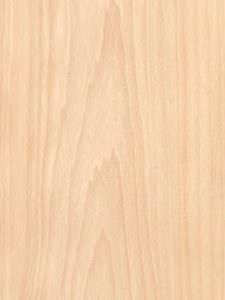 Anegre has a lustrous sheen, an even texture, and grain that is typically straight, but maybe interlocked, wavy, or marked with a wide range of beautiful shimmering figures. Sought after for its light creamy color, large logs, uniformity across flitches, and unobtrusive grain markings, anegre takes stain readily and is often dyed to resemble cherry, walnut, or other woods. Learn About Veneer Cut & Matching
Anegre has a lustrous sheen, an even texture, and grain that is typically straight, but maybe interlocked, wavy, or marked with a wide range of beautiful shimmering figures. Sought after for its light creamy color, large logs, uniformity across flitches, and unobtrusive grain markings, anegre takes stain readily and is often dyed to resemble cherry, walnut, or other woods. Learn About Veneer Cut & Matching -
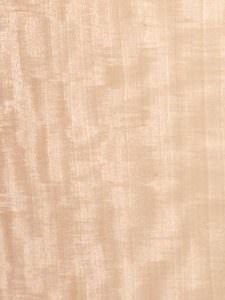 Anegre has a lustrous sheen, and even texture, and grain that is typically straight, but may be interlocked, wavy, or marked with a wide range of beautiful shimmering figures. Sought after for its light creamy color, large logs, uniformity across flitches, and unobtrusive grain markings, anegre takes stain readily and is often dyed to resemble cherry, walnut, or other woods. Learn About Veneer Cut & Matching
Anegre has a lustrous sheen, and even texture, and grain that is typically straight, but may be interlocked, wavy, or marked with a wide range of beautiful shimmering figures. Sought after for its light creamy color, large logs, uniformity across flitches, and unobtrusive grain markings, anegre takes stain readily and is often dyed to resemble cherry, walnut, or other woods. Learn About Veneer Cut & Matching -
 Anegre has a lustrous sheen, and even texture, and grain that is typically straight, but maybe interlocked, wavy, or marked with a wide range of beautiful shimmering figures. Sought after for its light creamy color, large logs, uniformity across flitches, and unobtrusive grain markings, anegre takes stain readily and is often dyed to resemble cherry, walnut, or other woods. Learn About Veneer Cut & Matching
Anegre has a lustrous sheen, and even texture, and grain that is typically straight, but maybe interlocked, wavy, or marked with a wide range of beautiful shimmering figures. Sought after for its light creamy color, large logs, uniformity across flitches, and unobtrusive grain markings, anegre takes stain readily and is often dyed to resemble cherry, walnut, or other woods. Learn About Veneer Cut & Matching -
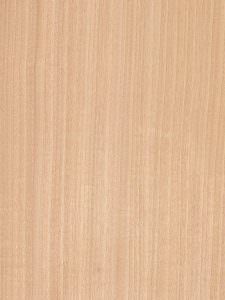 Anegre has a lustrous sheen, and even texture, and grain that is typically straight but maybe interlocked, wavy, or marked with a wide range of beautiful shimmering figures. Sought after for its light creamy color, large logs, uniformity across flitches, and unobtrusive grain markings, anegre takes stain readily and is often dyed to resemble cherry, walnut, or other woods. Learn About Veneer Cut & Matching
Anegre has a lustrous sheen, and even texture, and grain that is typically straight but maybe interlocked, wavy, or marked with a wide range of beautiful shimmering figures. Sought after for its light creamy color, large logs, uniformity across flitches, and unobtrusive grain markings, anegre takes stain readily and is often dyed to resemble cherry, walnut, or other woods. Learn About Veneer Cut & Matching -
 Ancient Norwegians considered a mythological ash tree to be the center of the world. Among the palest colored veneers, ash has a lustrous surface, beautiful straight grain, a light stripe effect, and subtle contrast between its light tan heartwood and creamy sapwood. It produces a wide range of beautiful, shimmering figures and delicate burls. Extremely strong, ash is the lumber of choice for parallel bars, baseball bats and tool handles. In veneer, it’s prized for high-quality furniture and for use in light, open interiors. Learn About Veneer Cut & Matching
Ancient Norwegians considered a mythological ash tree to be the center of the world. Among the palest colored veneers, ash has a lustrous surface, beautiful straight grain, a light stripe effect, and subtle contrast between its light tan heartwood and creamy sapwood. It produces a wide range of beautiful, shimmering figures and delicate burls. Extremely strong, ash is the lumber of choice for parallel bars, baseball bats and tool handles. In veneer, it’s prized for high-quality furniture and for use in light, open interiors. Learn About Veneer Cut & Matching -
 Ancient Norwegians considered a mythological ash tree to be the center of the world. Among the palest colored veneers, ash has a lustrous surface, beautiful straight grain, a light stripe effect, and subtle contrast between its light tan heartwood and creamy sapwood. It produces a wide range of beautiful, shimmering figures and delicate burls. Extremely strong, ash is the lumber of choice for parallel bars, baseball bats and tool handles. In veneer, it’s prized for high-quality furniture and for use in light, open interiors. Learn About Veneer Cut & Matching
Ancient Norwegians considered a mythological ash tree to be the center of the world. Among the palest colored veneers, ash has a lustrous surface, beautiful straight grain, a light stripe effect, and subtle contrast between its light tan heartwood and creamy sapwood. It produces a wide range of beautiful, shimmering figures and delicate burls. Extremely strong, ash is the lumber of choice for parallel bars, baseball bats and tool handles. In veneer, it’s prized for high-quality furniture and for use in light, open interiors. Learn About Veneer Cut & Matching -
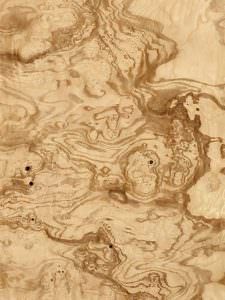 Olive Ash is not a species in itself, rather it’s the name given to veneer cut from the dark heartwood of one of several European ashes. The dark on light stripes is reminiscent of true olive wood. Colors range from white to yellow to brown in varied combinations of color and markings. Grain may be straight, curly, or wavy. Olive ash burl veneer is highly prized for its turbulent markings and striking color contrasts. Learn About Veneer Cut & Matching
Olive Ash is not a species in itself, rather it’s the name given to veneer cut from the dark heartwood of one of several European ashes. The dark on light stripes is reminiscent of true olive wood. Colors range from white to yellow to brown in varied combinations of color and markings. Grain may be straight, curly, or wavy. Olive ash burl veneer is highly prized for its turbulent markings and striking color contrasts. Learn About Veneer Cut & Matching -
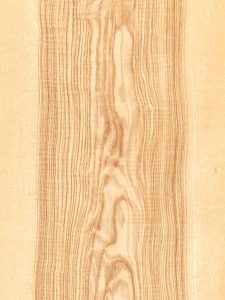 Olive Ash is not a species in itself, rather it’s the name given to veneer cut from the dark heartwood of one of several European ashes. The dark on light stripes is reminiscent of true olive wood. Colors range from white to yellow to brown in varied combinations of color and markings. Grain may be straight, curly, or wavy. Olive ash burl veneer is highly prized for its turbulent markings and striking color contrasts. Learn About Veneer Cut & Matching
Olive Ash is not a species in itself, rather it’s the name given to veneer cut from the dark heartwood of one of several European ashes. The dark on light stripes is reminiscent of true olive wood. Colors range from white to yellow to brown in varied combinations of color and markings. Grain may be straight, curly, or wavy. Olive ash burl veneer is highly prized for its turbulent markings and striking color contrasts. Learn About Veneer Cut & Matching

